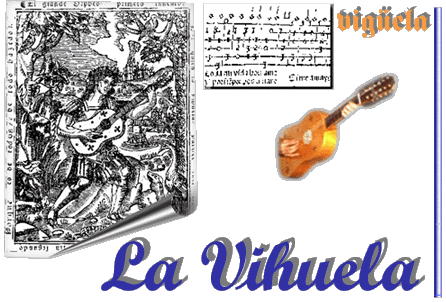

![]()
|
|
|
|
|
The vihuela was the most important instrument during the 16th century in Spain. The vihuela de mano school of seven composers led the instrument to its highest expression and development. Although a type of vihuela was found in southern Italy because of the economic and political relations between the two countries, the rest of Europe favoured the lute or vihuela de Flandes.Both the vihuela and the lute played the same rôle within the musical circles and satisfied people's fancies. Their technique and performing practice are identical, except for the vihuela's dedillo (rapid inward and outward movement of the first finger. Dos dedos (aternating the thumb and the first finger) had two variants according to Venegas de Henestrosa, figueta castellana and figueta estranjera. The repertory mostly includes intabulations of sacred and secular songs, fantasias, tientos, diferencias(variations) on popular harmonic progressions and arrangements of Italian madrigals, sonetos, French chansons and settings of coplas and ensaladas. Arrangements of dances are quite limited.The term vihuela is used today to speak of a big bass guitar-like instrument played by the Mexican 'mariachi' ensemble. Nevertheless, the vihuela and the guitar were used in colonial times throughout Latin America.
|

|
|
|
|
|
|